iPhone XS max specs and price in Kenya, iPhone XS max 64gb price in Kenya, iPhone XS Max 256GB price in Kenya, iPhone XS Max Price in Kenya Safaricom, iPhone XS 512gb price in Kenya, iPhone xs max dual sim price in Kenya, iPhone XS 64gb price in Kenya, iPhone XS 64 price in Kenya, iPhone XS 256gb price in Kenya, iPhone xs Price in Kenya, iPhone XS Max Price in Kenya,
Apple iPhone XS Price in Kenya
64GB 4GB RAM - K Sh 71,000 Buy From our shop
256GB 4GB RAM - K Sh 80,000 Buy From Our Shop
512GB 4GB RAM - K Sh 95,000 Buy From Our Shop
Apple IPhone XS MAx Price in Kenya
64GB 4GB RAM - K Sh 75,000 Buy From our shop
256GB 4GB RAM - K Sh 84,000 Buy From Our Shop
512GB 4GB RAM - K Sh 100,000 Buy From Our Shop
At a Glance
Features
- 5.8 and 6.5-inch screen sizes
- New gold color option
- Up to 512GB storage
- Faster Face ID and edge-to-edge display
- A12 Bionic chip
- Faster Gigabit LTE
- Priced starting at :
- $999 and $1099
iPhone XS and iPhone XS Max
The iPhone XS and iPhone XS Max, introduced on September 12, 2018, are Apple's two current flagship iPhones, featuring the most advanced technology Apple has introduced in an iPhone.
Both of the new iPhones look similar to the iPhone X, but in addition to the 5.8-inch model, there's also now a larger 6.5-inch model. iPhone XS and iPhone XS Max feature the sharpest OLED displays and highest pixel density of any Apple device, with support for Dolby Vision, HDR 10, and Wide Color.
iPhone XS Max, the 6.5-inch iPhone, is the largest display Apple has offered, but in a body that's the size of the iPhone 8 Plus. According to Apple, the iPhone XS and XS Max have the most durable glass ever in a smartphone with improved scratch resistance.
Like the iPhone X, iPhone XS and iPhone XS Max feature stainless steel frames and glass bodies that support wireless charging, along with edge-to-edge displays and a TrueDepth Camera System for Face ID.
For the first time, there's a new gold color option that joins the silver and space gray finishes of the iPhone X, and water resistance has been improved to IP68 to protect against spills and splashes.
Inside, the iPhone XS and iPhone XS Max are equipped with a 7-nanometer A12 Bionic chip that includes two-performance cores 15 percent faster than the A11 and four efficiency cores up to 50 percent more efficient. The four-core GPU in the A12 is up to 50 percent faster than the A11.
A faster storage controller enables up to 512GB of storage, with iPhone XS and iPhone XS Max models available in 64, 256, or 512GB capacities. A next-generation 8-core Neural Engine completes up to 5 trillion operations per second for major improvements to all apps and features that use AR and machine learning.
iPhone XS and iPhone XS Max feature the same 12-megapixel dual camera system introduced in the iPhone X, but with major upgrades. A bigger wide-angle sensor allows for sharper pictures in low light, while Smart HDR allows for photos with more detail.
A telephoto lens with 2x optical zoom continues to allow for Portrait Mode photos, which feature better bokeh, aka background blurring, and there's a new Depth Control option that allows for adjustable depth of field. Larger pixels, extended dynamic range, and a 32% larger sensor also improve stabilization and low-light performance when capturing videos, and the True Tone flash has been improved.

The TrueDepth Camera System continues to include a 7-megapixel lens for front-facing images, but it's been upgraded so that Face ID is faster than before.
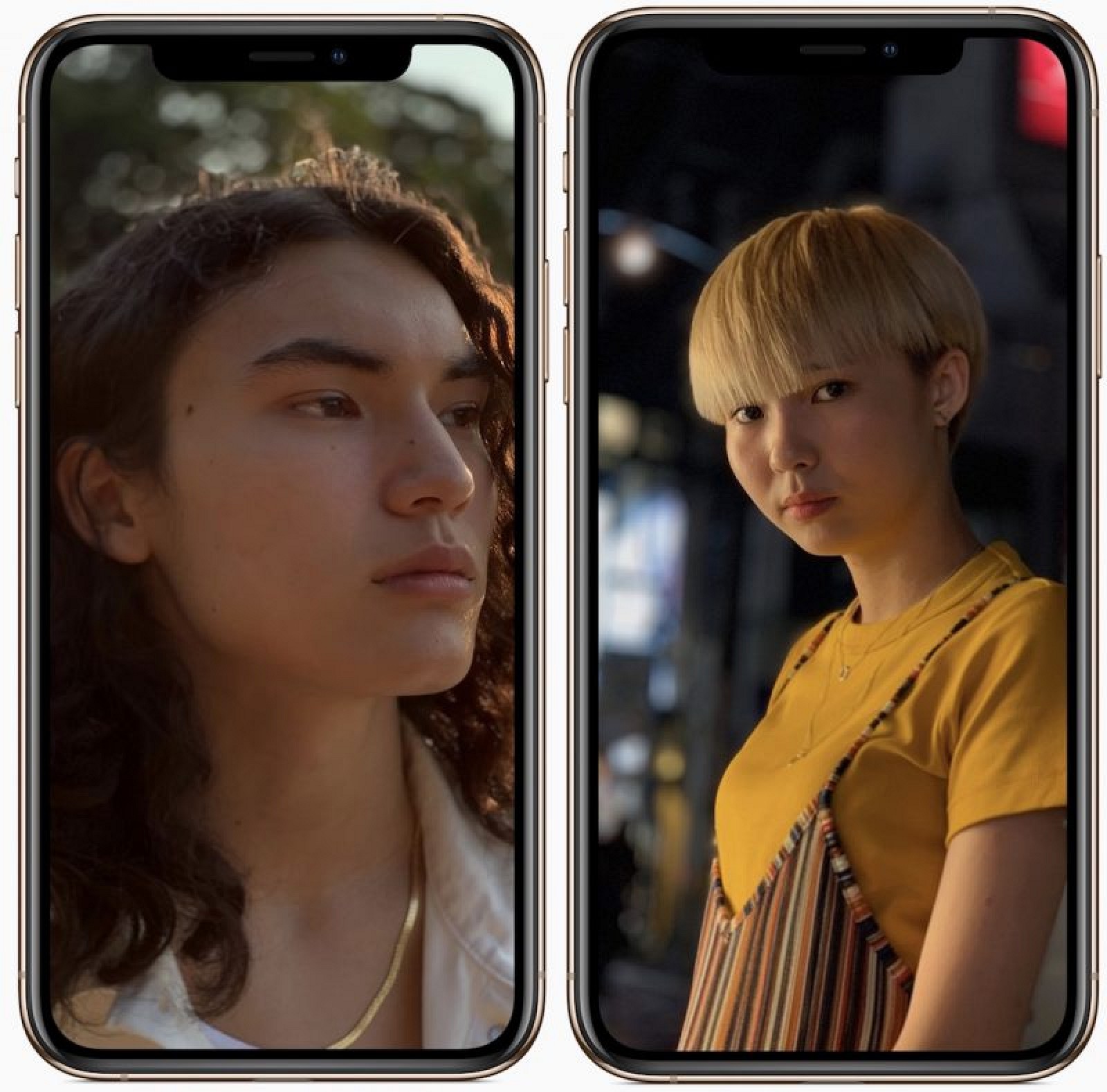
Other features include support for Gigabit-class LTE with 4x4 MIMO, Bluetooth 5.0, and Dual-SIM options with an included nano-SIM and eSIM for using two phone numbers at once. iPhone XS and iPhone XS Max support the most LTE bands ever in an iPhone.
Thanks to the A12 chip, battery life in the iPhone XS and XS Max has been improved compared to the iPhone X. The iPhone XS lasts for 30 minutes longer than iPhone X, while the iPhone XS Max lasts for an hour and a half longer.
Pricing for the iPhone XS starts at $999 for the 64GB model, while pricing for the iPhone XS Max starts at $1,099. iPhone XS and iPhone XS Max became available for pre-order on Friday, September 14 at 12:01 a.m. Pacific Time and launched on September 21.
Apple is selling the iPhone XS and iPhone XS Max alongside the more affordably priced iPhone XR. The $749 iPhone XR features the same edge-to-edge design and Face ID functionality in the iPhone XS models, but it has an LCD display instead of an OLED display, an aluminum frame instead of a stainless steel frame, and a single-lens camera.
Note: See an error in this roundup or want to offer feedback? Send us an email here.Pricing and Availability
The iPhone XS is priced starting at $999 for 64GB of storage, with 256 and 512GB of storage available for $1,149 or $1,349, respectively.
Pricing for the iPhone XS with the iPhone Upgrade Program costs $49.91 per month for the 64GB model, $56.16 per month for the 256GB model, and $64.50 per month for the 512GB model.

The iPhone XS Max is priced starting at $1,099 for 64GB of storage, with 256GB of storage available for $1,249 and 512GB of storage available for $1,449.
Pricing for the iPhone XS Max with the iPhone Upgrade Program costs $54.08 for 64GB of storage, $60.33 per month for 256GB of storage, and $68.66 per month for 512GB of storage.

Both the iPhone XS and iPhone XS Max can be ordered from the Apple online store, from Apple retail locations, and from third-party retailers who offer Apple products.
Reviews
Reviews for the iPhone XS and XS Max are largely positive, with reviewers praising the bigger screen size of the 6.5-inch model, the camera improvements, and the super fast A12 Bionic, but most reviewers do not recommend the iPhone XS and XS Max to owners of the iPhone X given the similarities between the devices.
iPhone users with an older device will appreciate the upgrade, but many reviewers also believe customers looking for a new device will be happiest with the iPhone XR, Apple's lower cost $749 device that offers many of the same features like A12 chip, Face ID, and camera improvements.
Below, we've highlighted some useful sections from various reviews that have hit the web to help customers trying to decide whether or not to purchase one of the new devices.
Mashable pointed out that even though the iPhone XS Max has a much bigger screen, it feels light in the hand, a sentiment echoed by many of the reviews. The site also said that everything looks better on the bigger display.
I already knew the screen was amazing since I'm an iPhone X owner, but everything -- and I do mean everything -- looks better on the iPhone XS Max's bigger display. It sucks you in and then keeps your eyes locked on it until you've realized you've just spent far too many hours scrolling through Instagram Explore than normal.
TechCrunch said the battery life of the iPhone XS Max was "beast mode" and while iPhone XS wasn't as impressive, it did best the iPhone X. On the new gold color, TechCrunch said it looks like "a very expensive gold" with new glass Apple created with Corning.
The review units I was given both had the new gold finish. As I mentioned on the day, this is a much deeper, brassier gold than the Apple Watch Edition. It's less 'pawn shop gold' and more 'this is very expensive' gold. I like it a lot, though it is hard to photograph accurately -- if you're skeptical, try to see it in person. It has a touch of pink added in, especially as you look at the back glass along with the metal bands around the edges. The back glass has a pearlescent look now as well, and we were told that this is a new formulation that Apple created specifically with Corning. Apple says that this is the most durable glass ever in a smartphone.
Daring Fireball's John Gruber said the new camera is the main "wow" factor distinguishing the iPhone XS and XS Max from the iPhone X. Gruber said he was "simply blown away" by the results he was seeing from the iPhone XS.

Sometimes the difference is subtle but noticeable; sometimes the difference is between unusable and pretty good. The iPhone XS can capture still images and video that the iPhone X cannot.
The New York Times' Brian Chen expected to dislike the larger iPhone XS Max, but said he ultimately felt the trade-offs "felt minor." He even found it usable with one hand.
The trade-offs of the new jumbo model felt minor. By eliminating the bezels, which are the screen's borders, Apple did a terrific job of increasing screen size without adding bulk or compromising the usability of the XS Max. I still think the smaller XS is a better fit for most people, but many would enjoy the XS Max.
WIRED's Lauren Goode didn't feel that the new iPhones "spark strong feelings" aside from "chagrin that they cost so much."
Some people will upgrade because they're due for an upgrade. Others will buy one of these because they want to have the newest thing. And that's fine. They're great phones. Just don't expect to feel the kind of feelings, as you're sliding this phone out of your pocket or purse, that you'd get with a radically redesigned piece of hardware. As I used these new phones, I found myself struggling to define, exactly, what felt new about them. It's there; you just have to dig deep.
The Verge's Nilay Patel said that while the iPhone XS is using a new A12 chip that's 15 percent faster than the A11 in the iPhone X, the speed improvement also isn't all that noticeable. He also wasn't impressed with Apple's Smart HDR feature, which he said is overly aggressive and smooths the detail out of photos. He also said the speakers are indeed noticeably louder.
Apple made a big deal out of the "wide stereo" speakers on the XS during the keynote, which felt a little silly, but the speakers on the iPhone XS are definitely louder and clearer than the speakers on the X. Like the X, the XS boosts the volume of the earpiece speaker to serve as the other stereo channel. But this year, both the earpiece speaker and the bottom speaker are closely matched, which lets Apple do some processing on the audio for greater stereo separation.
AnandTech said that the A12 Bionic chip in the iPhone XS and XS Max is "just margins off" from the best desktop CPUs. The site also believes Apple undersold the A12's improvement over the A11, with performance improvements at approximately 40 percent for many workloads.
Other reviews to read: CNET, The Wall Street Journal, USA Today, CNBC, TechRadar, Tom's Guide, The Telegraph, iNews, Pocket-lint, Best Products, Hypebeast, DailyMail, and The Sydney Morning Herald.
Issues
When Apple launches a new iPhone, there are often issues that users encounter in the first days with the device. The iPhone XS and XS Max are no exception, and there have been complaints about several problems.
Skin-Smoothing Selfie Camera
Selfies and photos captured with the iPhone XS were noticeably different from photos captured with earlier iPhone models, which led some to speculate that Apple has implemented a "beauty mode" that's designed to make skin look better.
Apple addressed the complaints about the aggressive skin-smoothing effect on the iPhone XS and the iPhone XR in the iOS 12.1 update. Following the update, the Smart HDR feature in these devices picks a sharper base frame to work with, preserving more detail when photos are merged together to improve highlights and shadows.
Charging Problems
Some iPhone XS and iPhone XS Max owners have noticed that the two devices can fail to start charging when a Lightning cable is plugged in while the screen is off.
In these situations, the iPhones refuse to charge until the screen is tapped or activated via the side button. This can cause issues if the iPhone is plugged in when it is off. Apple fixed this issue in the iOS 12.0.1 update.
LTE and Wi-Fi Problems
iPhone XS and XS Max owners have noticed issues with LTE connectivity, with many MacRumors readers complaining of connection issues and slower LTE speeds.
It's not clear what's going on with the LTE speeds, but issues could be caused by early firmware and a software update may resolve the problem. Apple in iOS 12.1 introduced unspecified improvements to LTE in the iPhone XS and XS Max to bolster connectivity and address these complaints.
There was also an issue where iPhone XS and iPhone XS models were preferring to connect to 2.4GHz Wi-Fi networks instead of 5GHz Wi-Fi networks. Apple fixed the bug in iOS 12.0.1 and users should see faster, more reliable Wi-Fi connection speeds following the update.
Design
Design wise, the 5.8-inch iPhone XS is essentially identical to the previous-generation iPhone X, and the 6.5-inch iPhone XS Max, Apple's largest display in an iPhone ever, features the same design but in a bigger package. The iPhone XS and XS Max both have OLED displays that stretch from edge to edge and top to bottom with minimal bezels for an all-screen design.
There's a slim bezel that wraps around the side of each device and a notch on the front that houses the TrueDepth camera system, speakers, and sensors, but otherwise, all you see when you look at the iPhone XS and iPhone XS Max is the display.

The rounded corners of the iPhone XS's display flow into a body made from glass that's encased with a highly polished steel frame that comes in Silver, Space Gray, or Gold. As with the iPhone X, Apple used a seven-layer ink process for the iPhone XS and XS Max, resulting in an almost pearlescent finish for the devices.
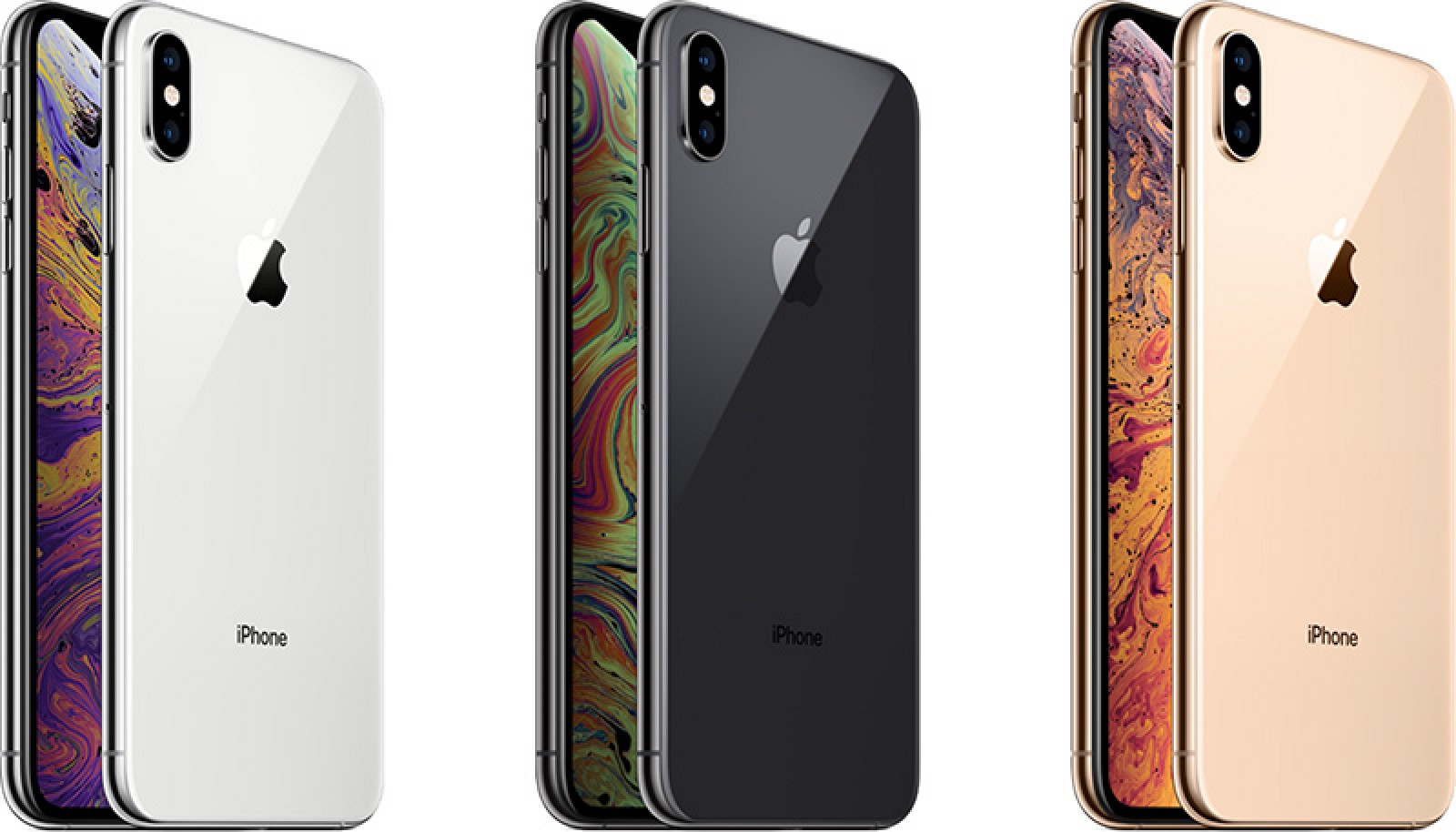
The steel frame of the new iPhones is made from an Apple-designed alloy that matches the body color, with nearly invisible antenna bands on the top and bottom of the device. At the edges of the display where it folds into the rounded corners of the frame, Apple uses folded circuit stacking technology along with subpixel anti-aliasing for super smooth, distortion-free edges.
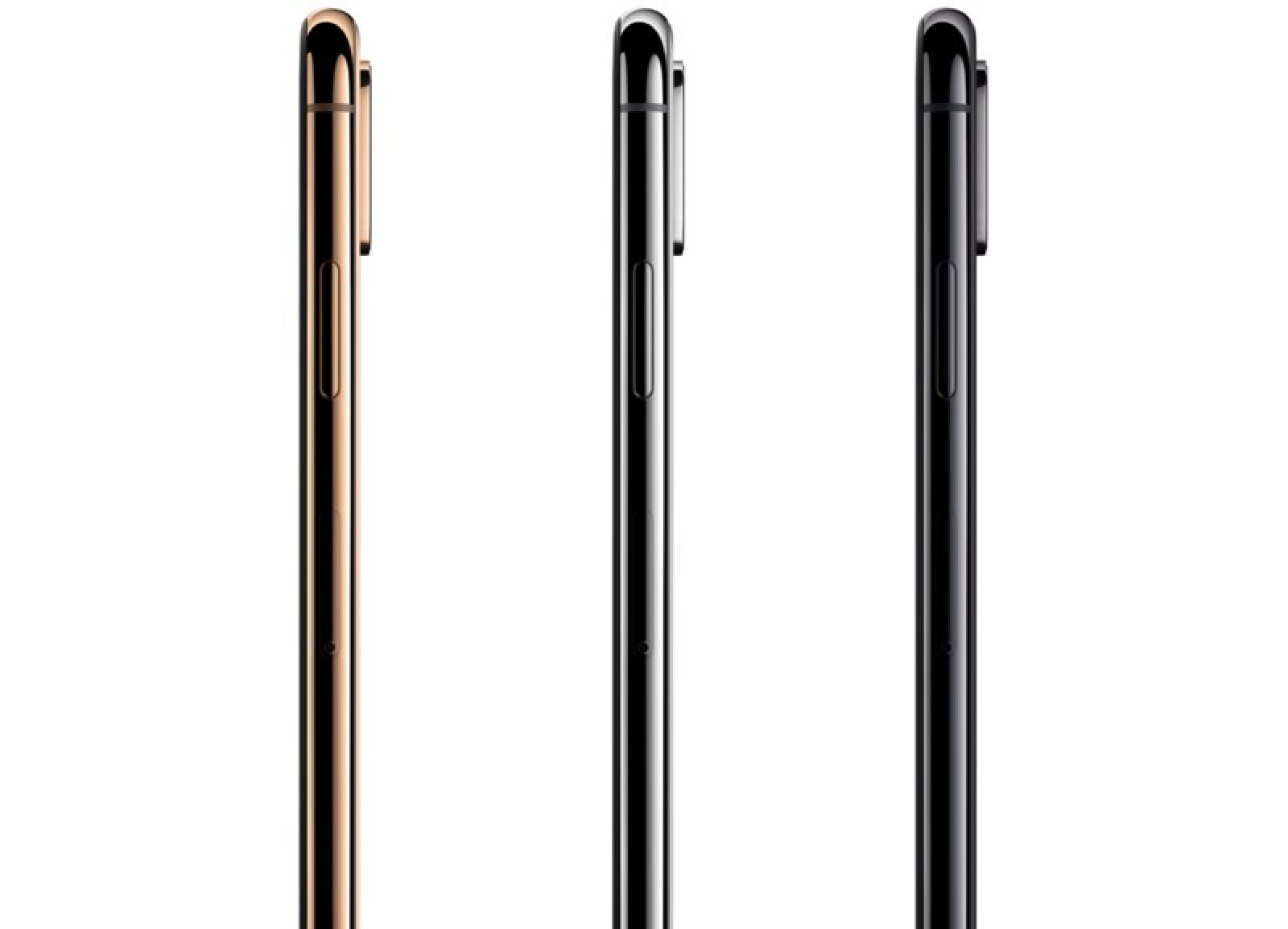
As with the iPhone XS, there is no bottom bezel, no Home button, and no Touch ID fingerprint sensor. The iPhone XS is the same exact size as the iPhone X, while the iPhone XS Max is a bit smaller than the iPhone 8 Plus but with a much larger display.
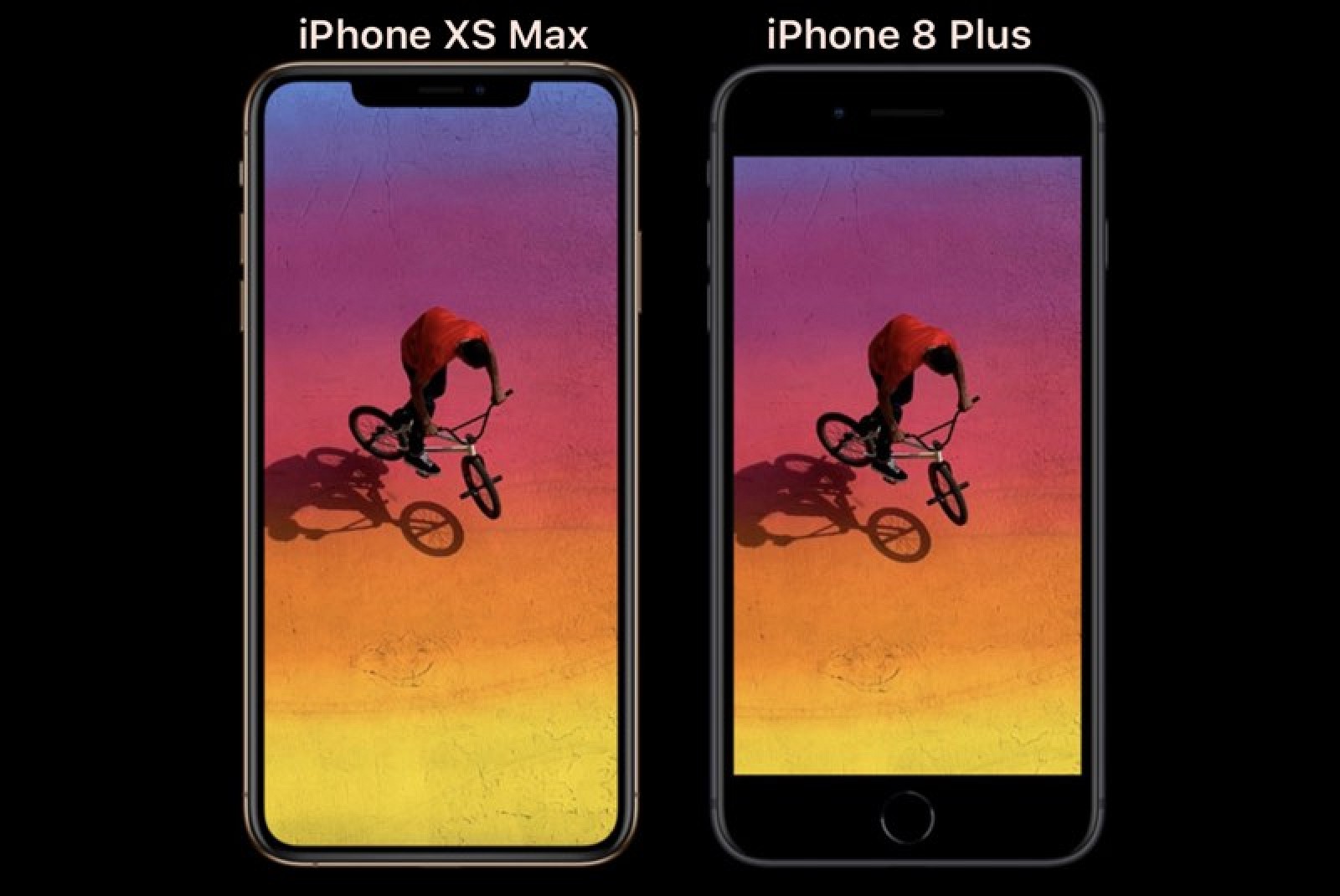
On the left side of the new iPhone XS models, there's a mute switch and two volume buttons, while the right side features an elongated side button. At the back, there's a dual-lens rear camera arranged in a vertical orientation.

The camera protrudes slightly from the body of the smartphones, and between the two lenses, there's a quad-LED flash and a microphone. At the bottom of each device, there's a traditional Lightning port for charging purposes along with speaker holes located on either side of it. Apple has introduced stereo recording and wider stereo playback in the iPhone XS and XS Max for improved video playback and better sound in the videos you capture.
The iPhone XS measures in at 143.6mm tall by 70.9mm wide, and it is 7.7mm thick. It is slightly heavier than the iPhone X at 177 grams.

Apple's new 6.5-inch iPhone XS Max measures in at 157.5mm tall by 77.4mm wide, and it is 7.7mm thick. It weighs 208 grams, which means it's not too much heavier than the iPhone XS.

Glass is highly fragile and the iPhone X was prone to breakage, but Apple says the iPhone XS and iPhone XS Max are using a more durable scratch resistant glass, which is likely the Gorilla Glass 6 material announced earlier this year.
The iPhone XS is similar in size to the iPhone X, but some cases designed for the iPhone X might not fit the iPhone XS properly because the camera bump on the iPhone XS is slightly taller and wider. Most cases should fit okay, but some may not work.
Color Options
Apple is offering the iPhone XS and XS Max in Silver, Space Gray, and Gold, with the latter color being new this year. The iPhone X was only sold in Silver and Space Gray because it took time for Apple to perfect the gold shade.
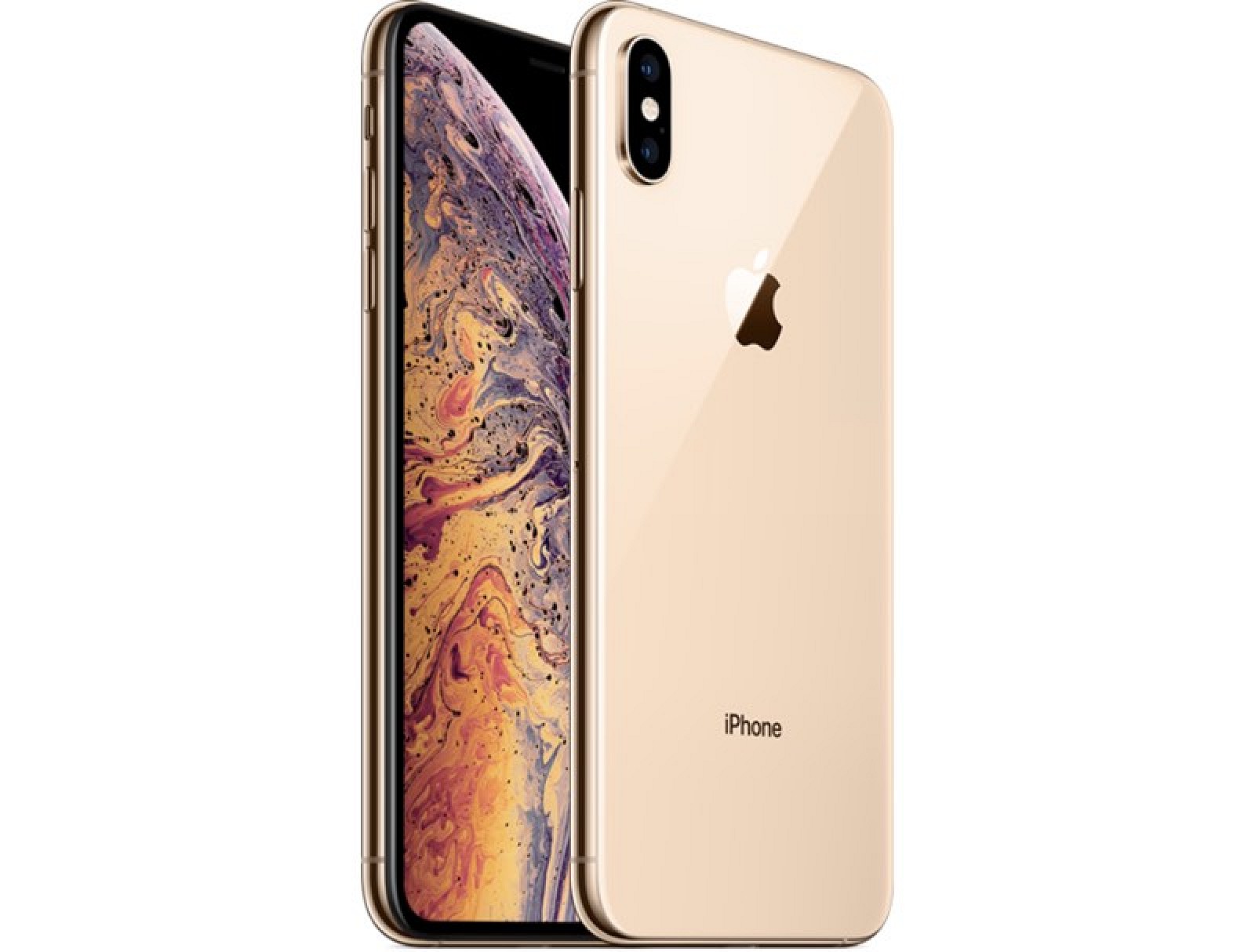
According to Apple, its Gold and Space Gray shades use an "advanced physical vapor deposition process" on the stainless steel bands for rich colors and a reflectivity level that matches the glass body of the device.
Water and Dust Resistance
Apple's upgraded iPhone XS models feature improved water resistance, with the two devices now offering an IP68 rating, up from the IP67 rating of the iPhone X.
The IP68 rating means the iPhone XS and XS Max can withstand water up to two meters (6.6 feet) deep for approximately 30 minutes. In the IP68 number, the 6 refers to dust resistance while the 8 represents water resistance.
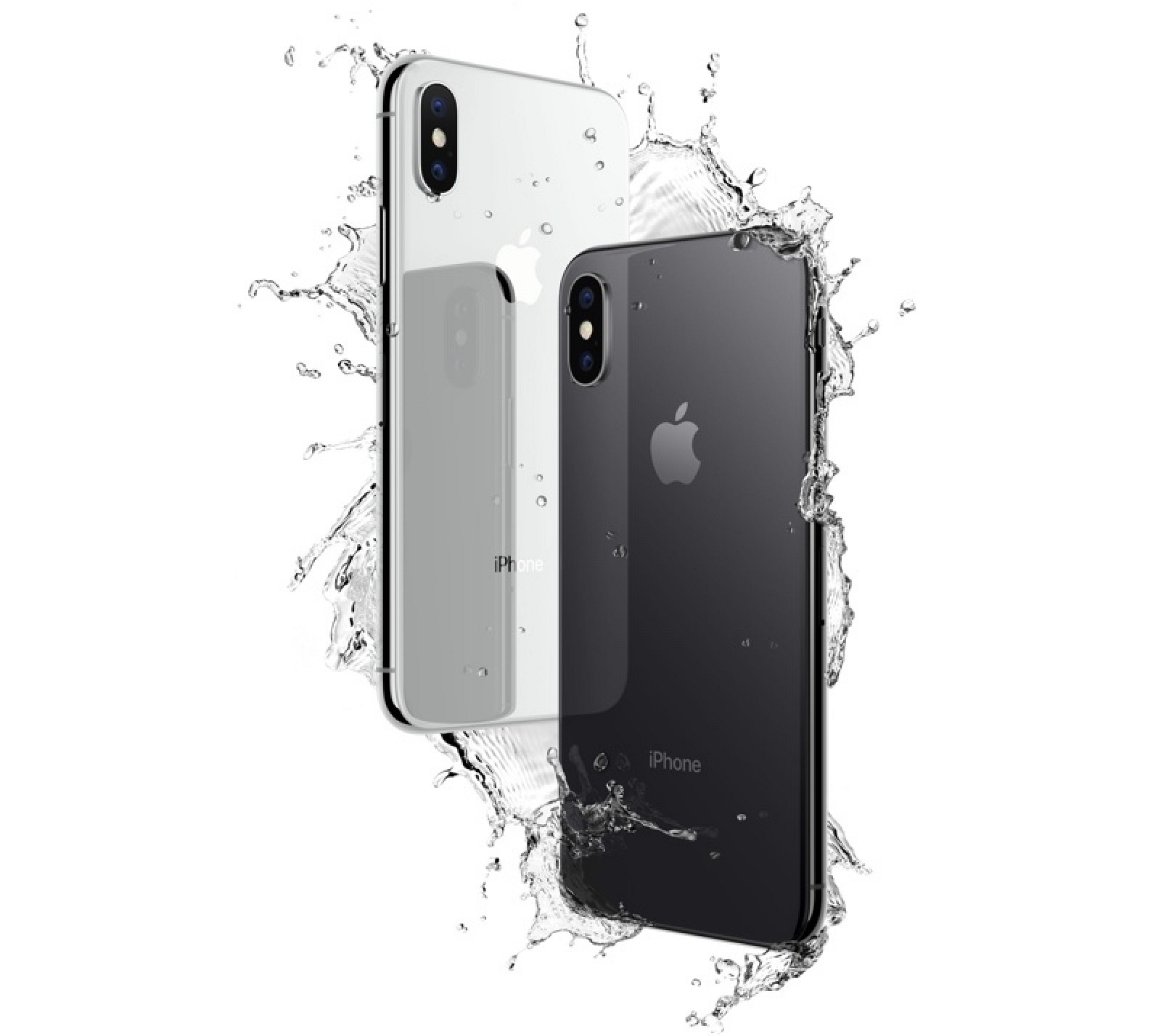
IP6x is the highest dust resistance rating, so the iPhone XS and iPhone XS Max are fully protected from dust and dirt, with no change to dust resistance. The two devices are able to hold up to splashes, rain, and accidental water exposure, and successfully passed a dunk test in five feet of liquid for 30 minutes.
Apple does not cover any kind of water damage to iOS devices, so while the iPhone XS models are more resistant to water, it's best to use caution when exposing them to liquids and it should be avoided whenever possible.
Red Color Option
Rumors suggest Apple will release red iPhone XS and XS Max models in China in February, which will accompany the iPhone XR. The devices will not be branded PRODUCT(RED) in the country, and will instead be called China Red. Red is a popular color in China, and it could draw in new XS and XS Max customers.
Display
Apple has made no changes to the display of the iPhone XS and iPhone XS Max, with the exception of introducing a larger version in the new 6.5-inch device.
The 2018 iPhone models feature the same "Super Retina" OLED HDR display that was introduced in the iPhone X, with support for Dolby Vision, HDR10, and wide color gamut for unparalleled color accuracy. The Super Retina display features vivid, true-to-life colors, deeper blacks, and a 1,000,000 to 1 contrast ratio.

Apple's multi-touch Super Retina display offers noticeable upgrades over traditional LCD displays, but there is no difference between the iPhone X and the iPhone XS or iPhone XS Max. Maximum brightness continues to be 625 cd/m2, and features like True Tone and 3D Touch are supported.
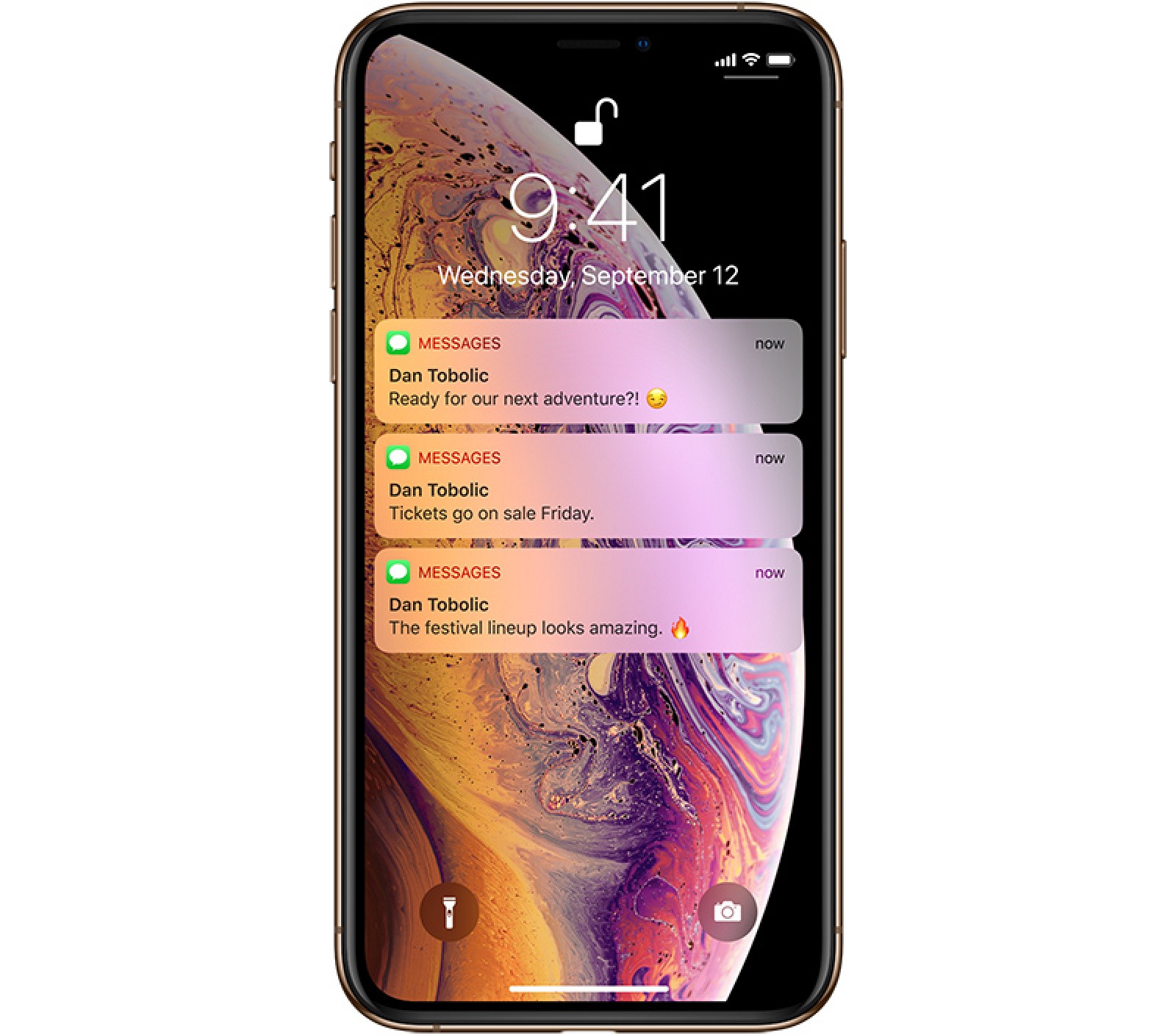
True Tone uses the iPhone's ambient light sensor to adjust the white balance of the display to match the ambient lighting in a room, cutting down on eyestrain and making for a more paper-like reading experience.
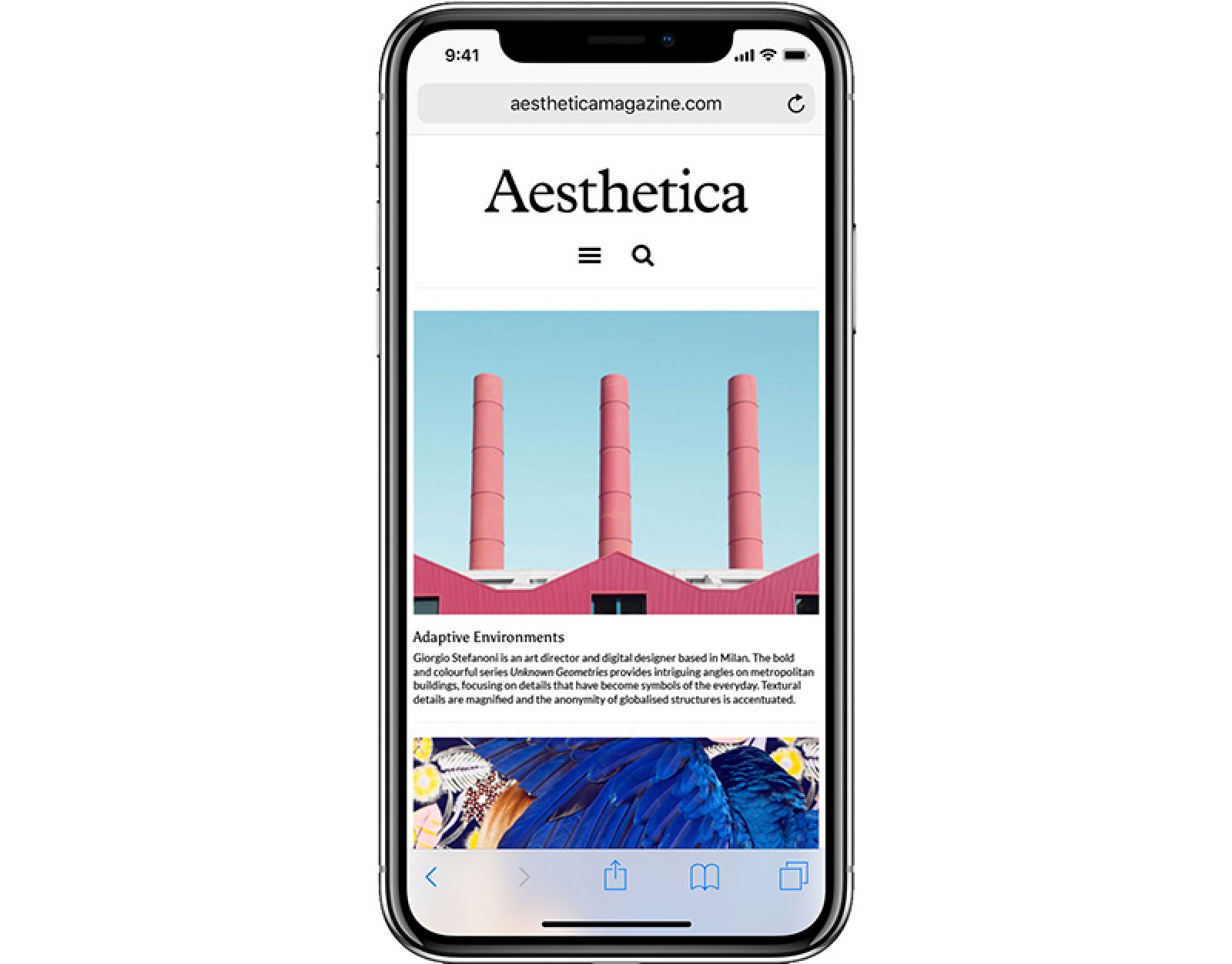
The iPhone XS, like the iPhone X, features a 2436 x 1125 resolution with 458 pixels per inch, while the iPhone XS Max features a 2688 x 1242 resolution, also with 458 pixels per inch.
According to DisplayMate, a site known for testing smartphone displays, the iPhone XS Max has the best smartphone display ever with a peak full-screen brightness up to 660 nits and a screen reflectance of 4.7 percent, close to the lowest ever measured for a smartphone. Combined, these factors result in excellent contrast ratings in high ambient light.
3D Touch and Taptic Engine
Apple's iPhone XS models continue to feature a Taptic Engine and support for 3D Touch gestures. 3D Touch is available throughout the iOS 12 operating system and is often used to display additional information through a force press gesture.
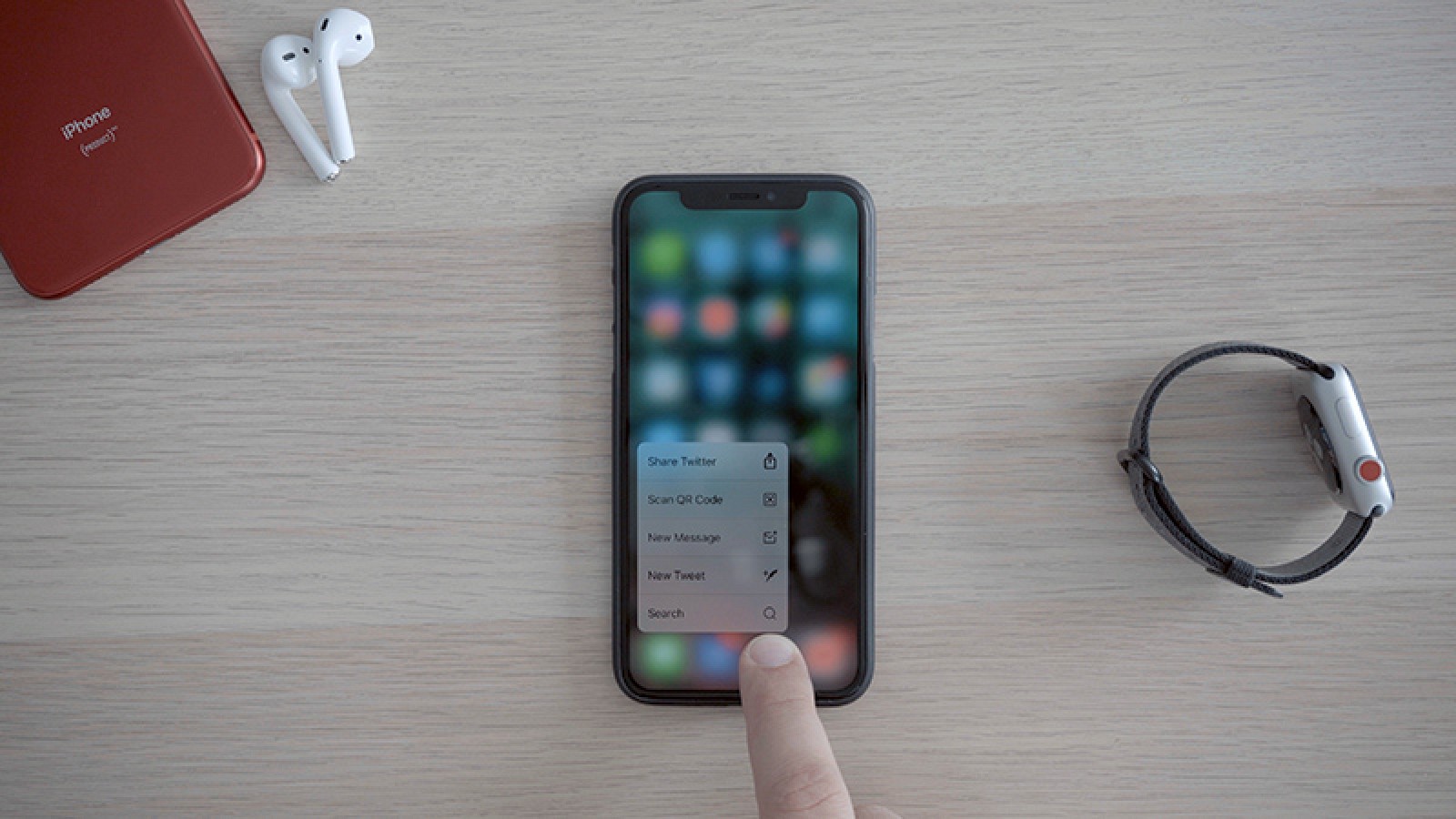
The Taptic Engine offers tactile feedback in the form of haptic vibrations when users interact with the iPhone's display.
A12 Bionic Processor
The iPhone XS models are equipped with a new 7-nanometer A12 Bionic chip that's faster and more efficient than the A11 in the previous-generation iPhone X.
iPhone XS Price in Kenya and iPhone XS Max Price in Kenya